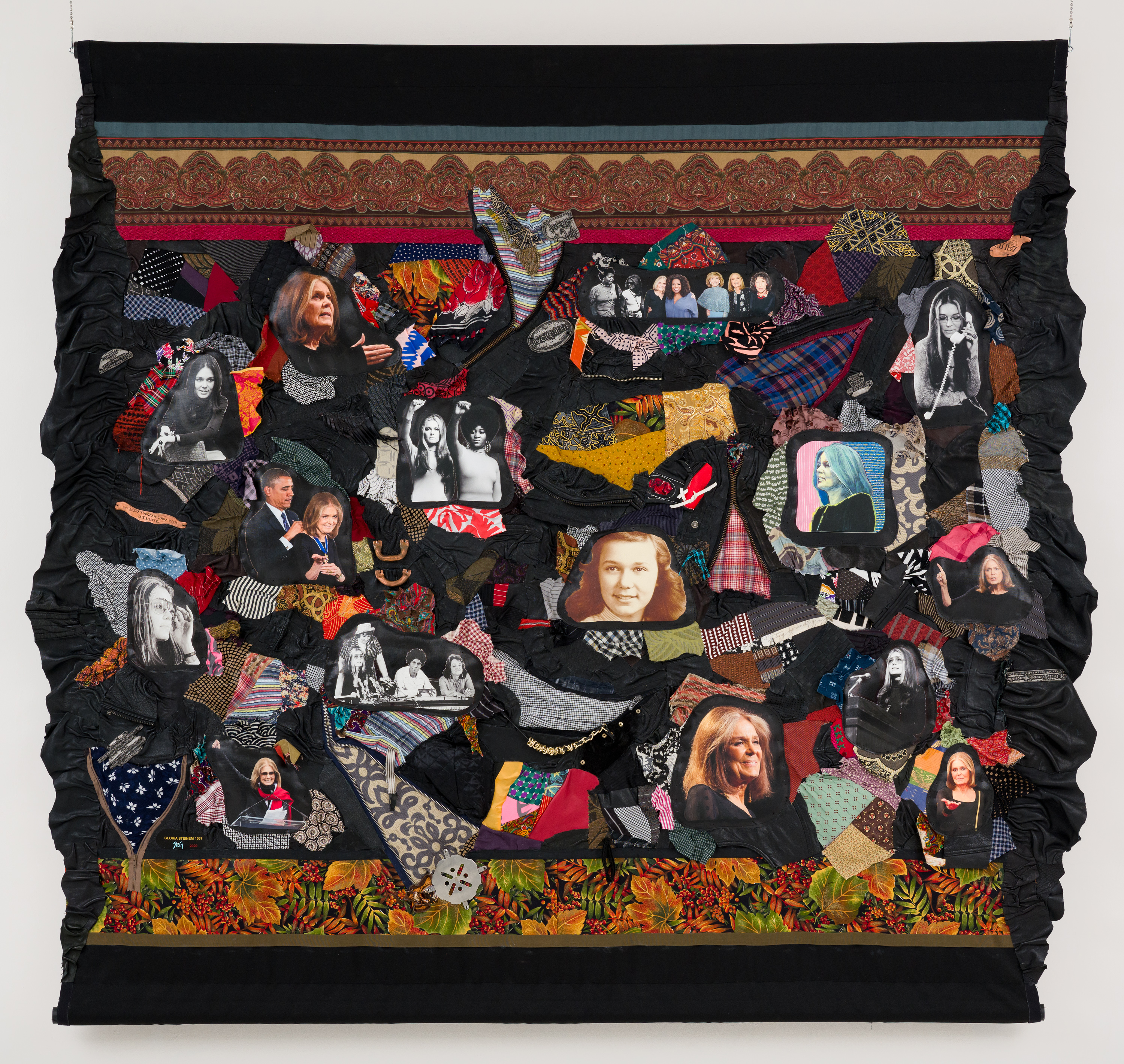Sexism: Exploring, Exploding, Expanding Expressions of Masculinities and Femininities
Sexism, the stereotyping and discrimination based on gender, is confronted in Linda Stein’s series SEXISM. Stories of women being told to put their legs together, to take up less space, and their defiant response to such narrow inscriptions of femininity are the content for the video and tapestry, Legs Together and Apart. 925 (2018). The top image on this page, titled “Gloria Steinem 1037,” is a tapestry created by Linda Stein in 2020, which is 64″x72″x3″.
Click here to see the art in this series

